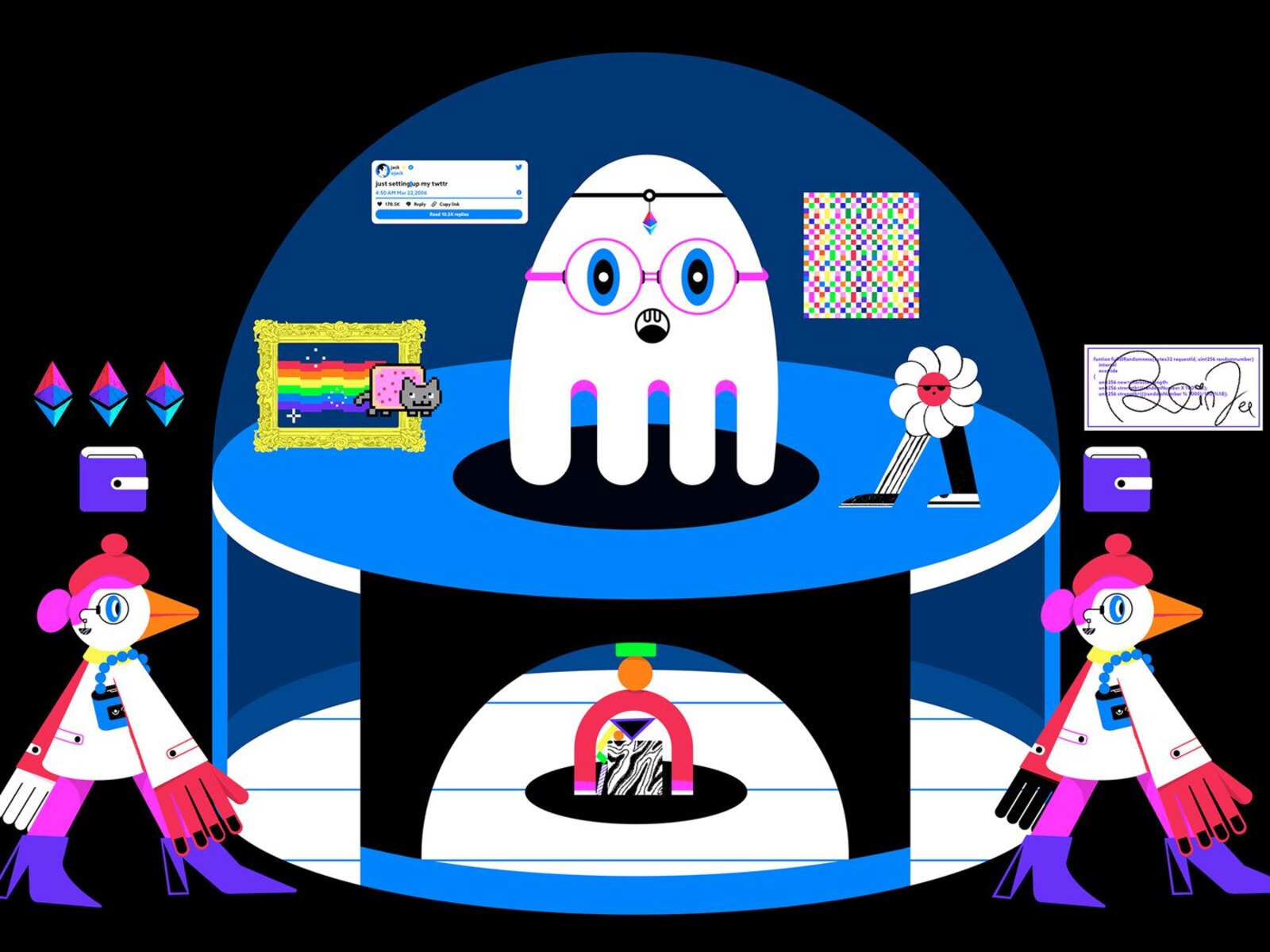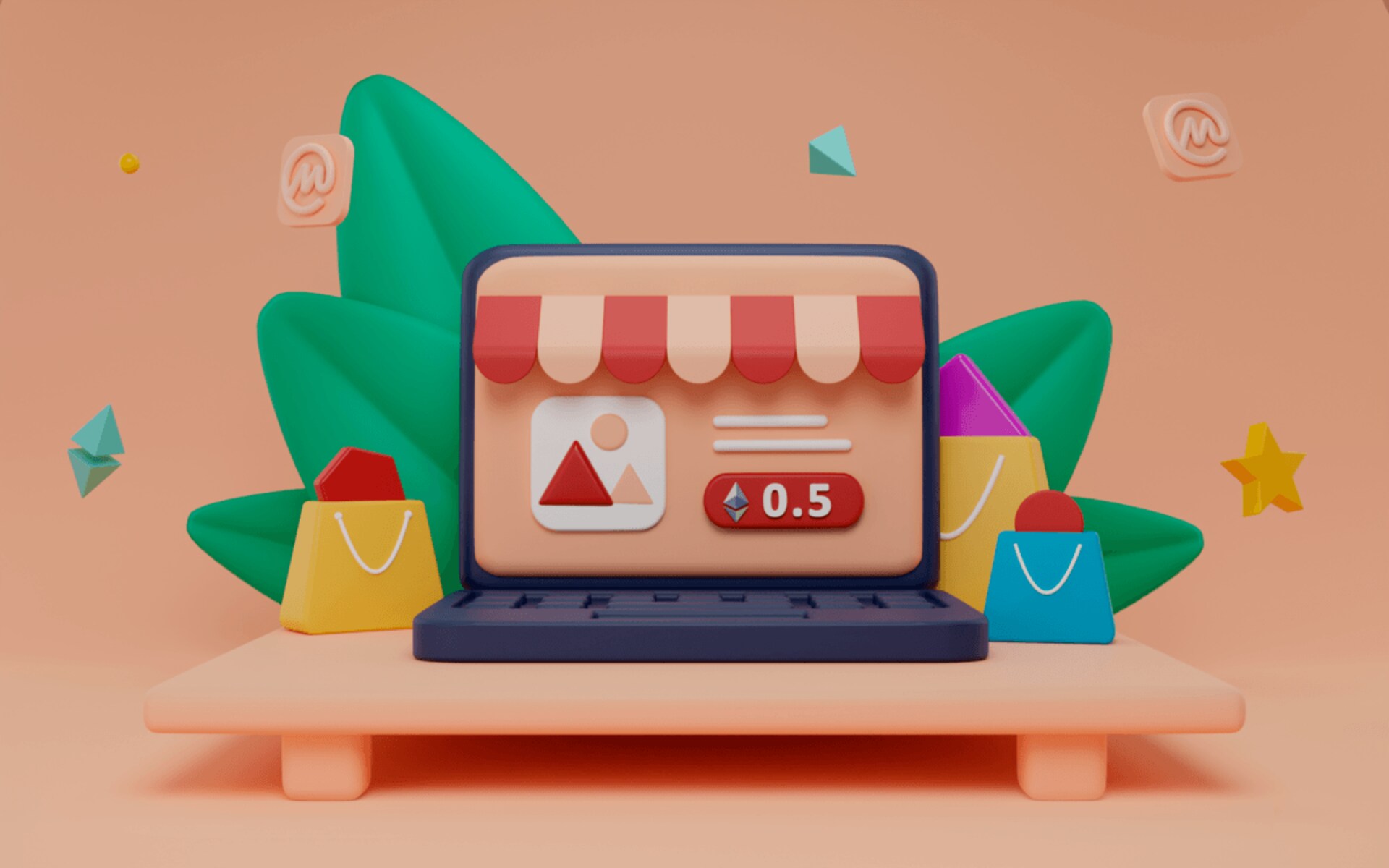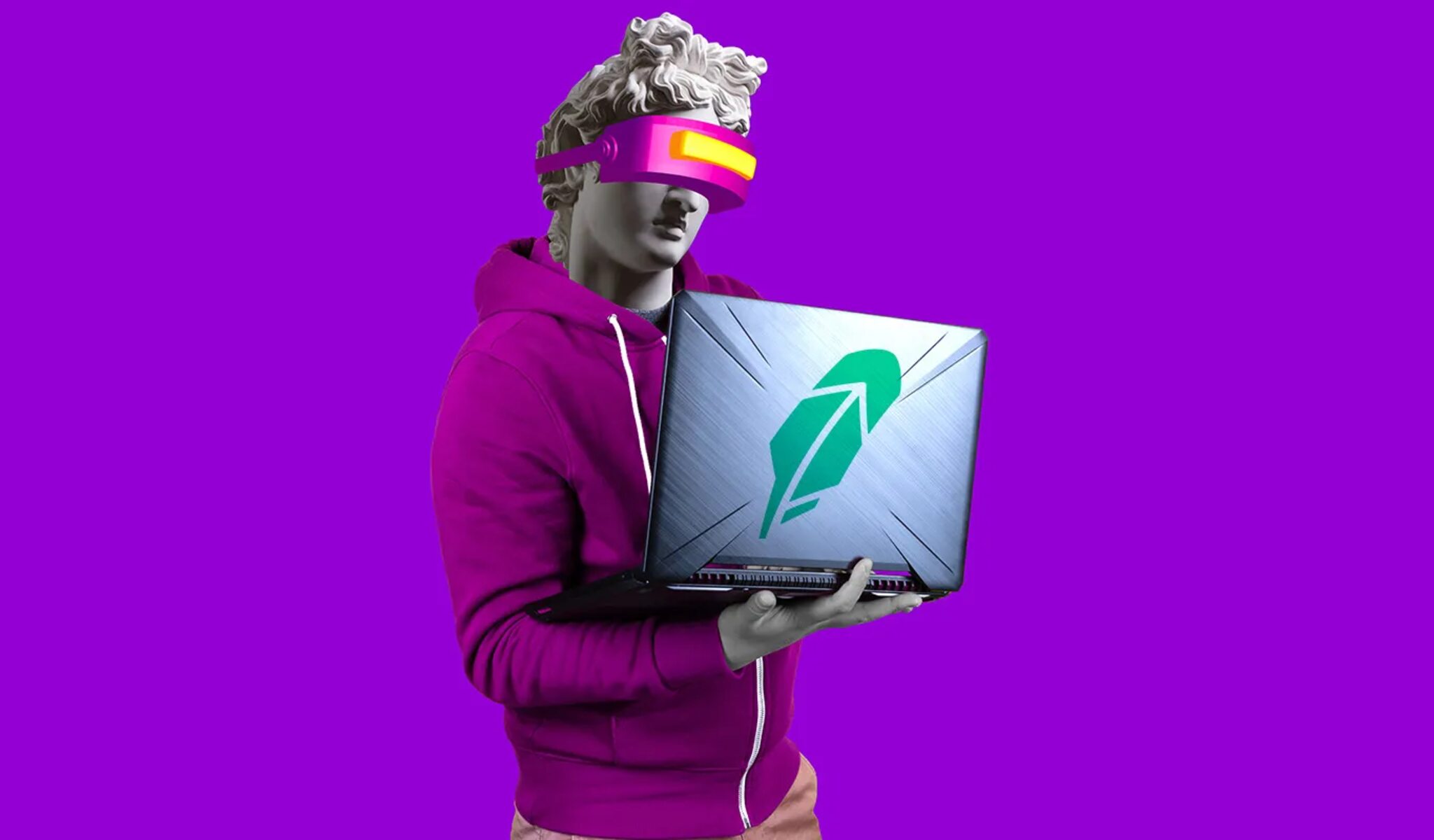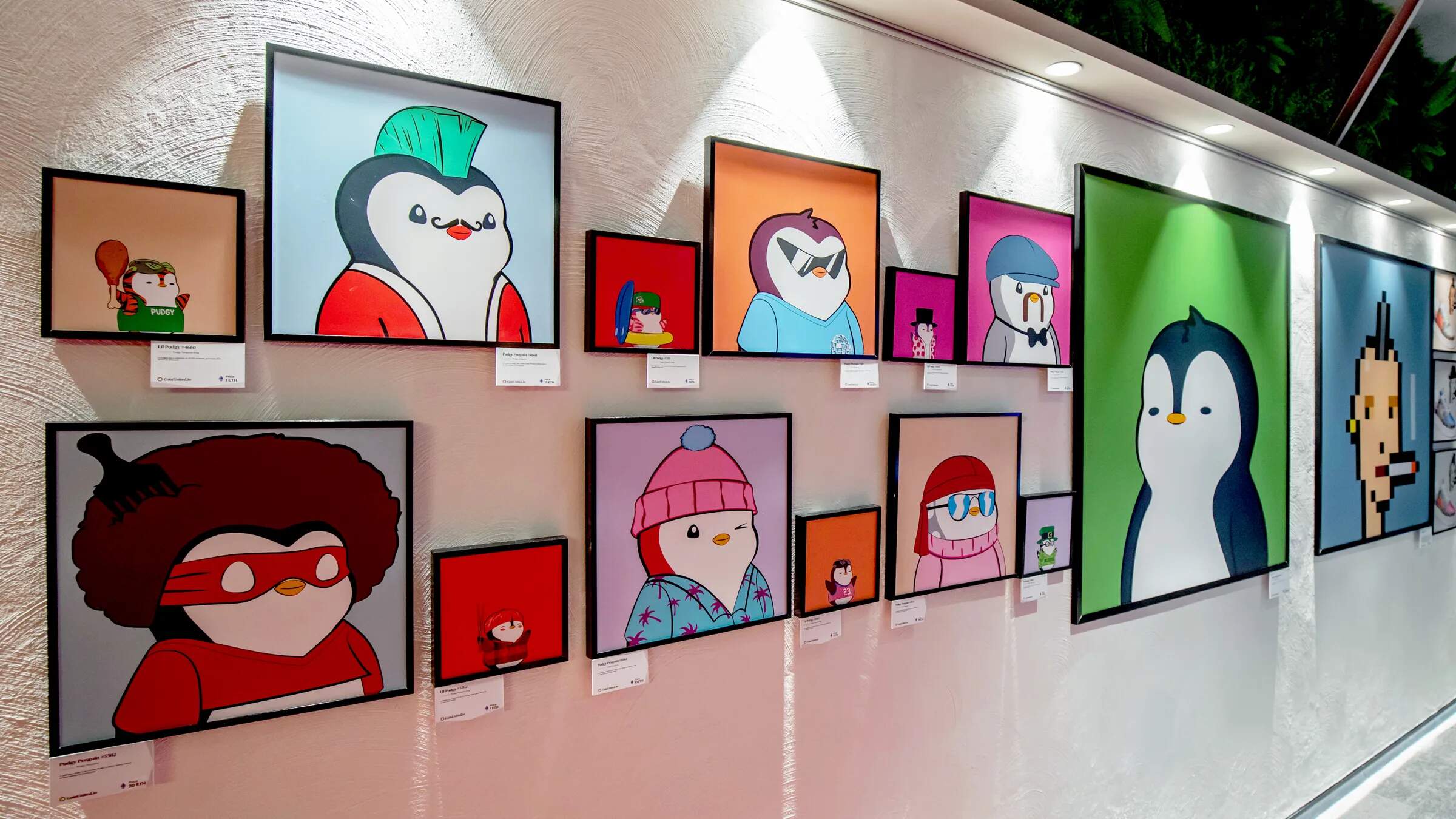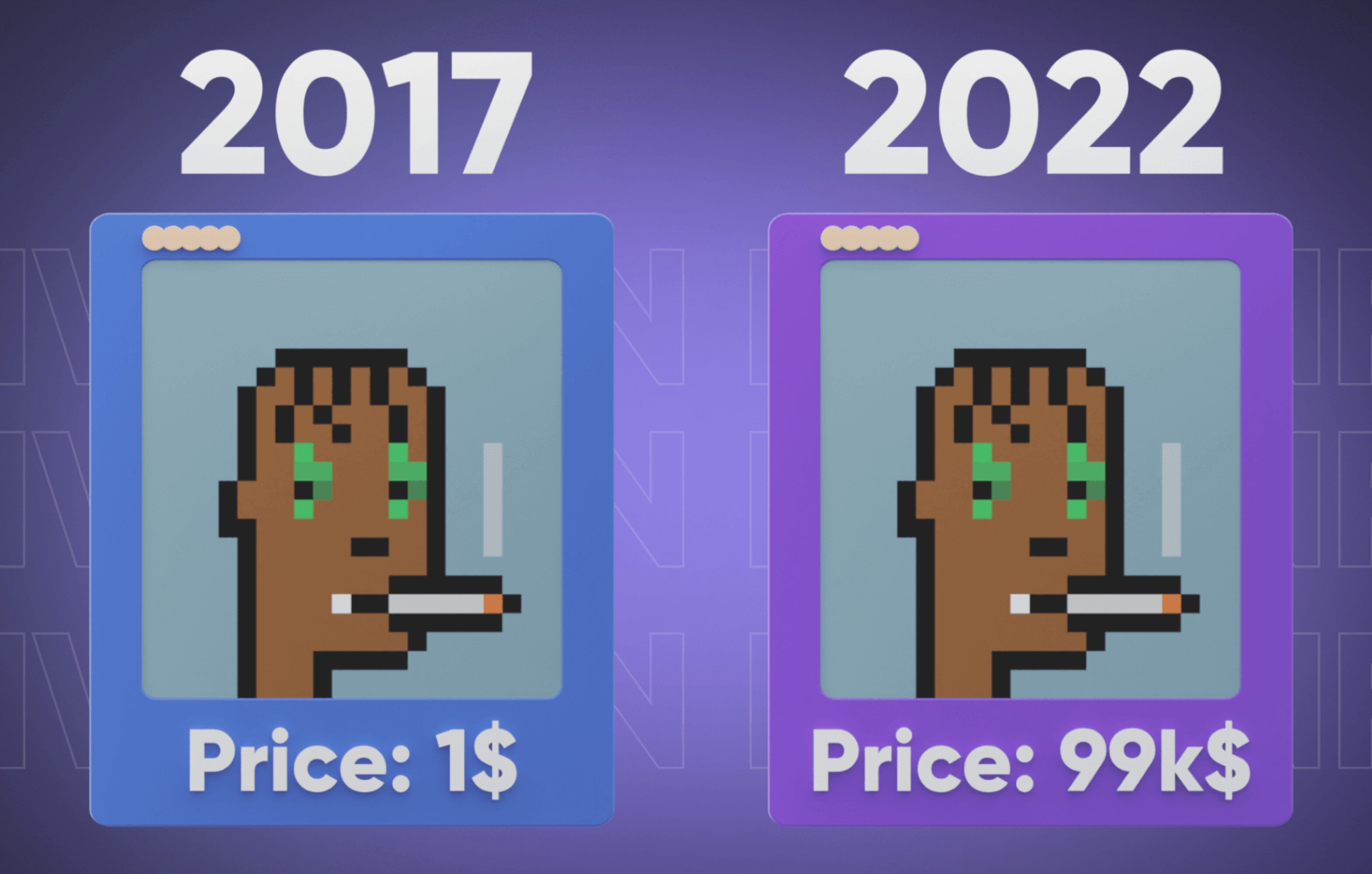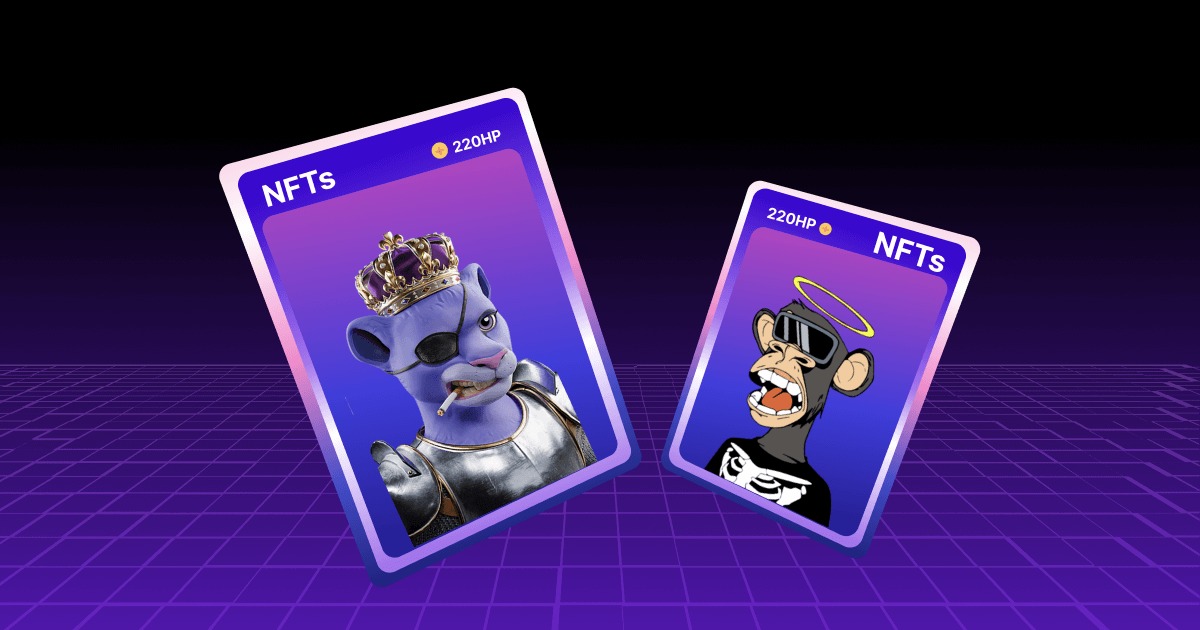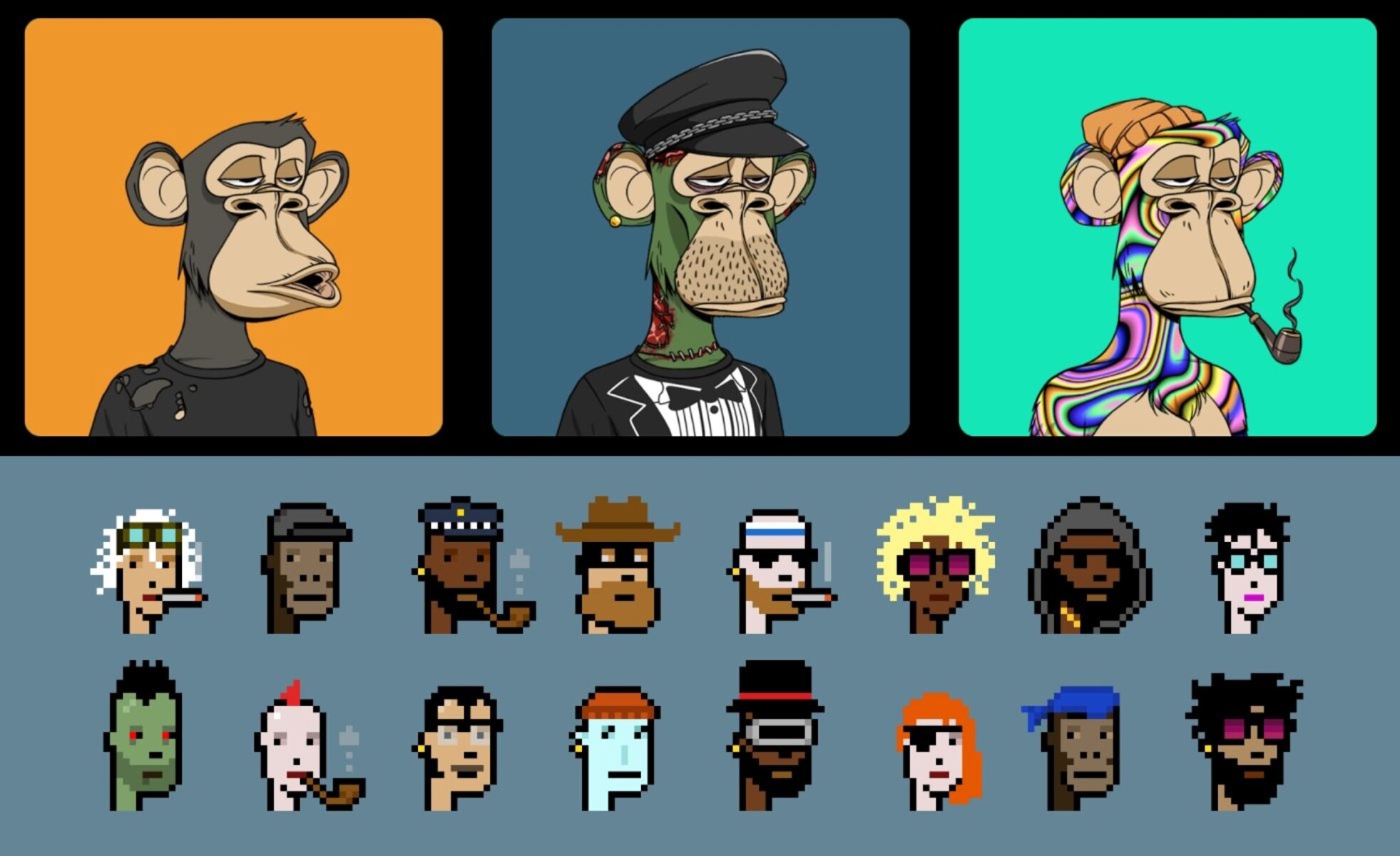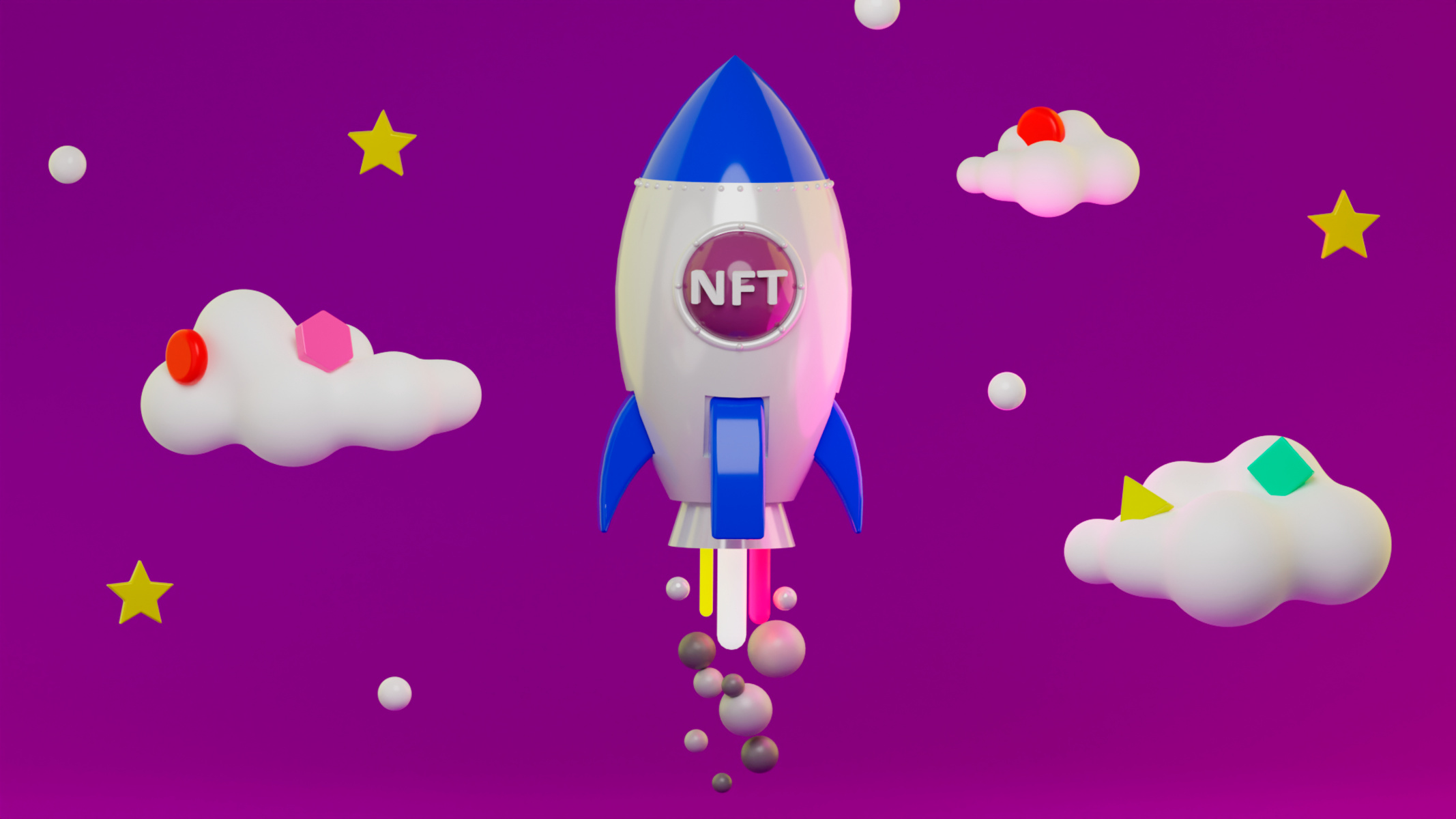Introduction
The world of cryptocurrency and blockchain technology is constantly evolving, with new innovations and trends emerging regularly. One of the most recent and buzzworthy developments in this space is the rise of NFTs, or non-fungible tokens. NFTs have captured the attention of artists, collectors, and investors around the world, creating a new digital marketplace for buying, selling, and trading unique digital assets.
Unlike cryptocurrencies such as Bitcoin or Ethereum, which are fungible and can be exchanged for one another, NFTs are unique and indivisible. Each NFT represents a distinct item, whether it’s a piece of artwork, a video clip, a music file, or even virtual real estate. This uniqueness is made possible by the underlying blockchain technology, which verifies the ownership and authenticity of each NFT.
NFT markets are online platforms where individuals can discover, buy, and sell NFTs. These markets serve as a virtual gallery or marketplace, connecting artists and creators directly with potential buyers. NFT markets have gained significant attention and popularity in recent months, with high-profile sales making headlines and attracting mainstream interest.
The concept of owning digital assets has opened up new opportunities for artists and content creators, allowing them to monetize their creativity in ways that were previously unimaginable. NFT markets provide a platform for artists to showcase and sell their work, while collectors have the chance to own unique and rare digital assets that hold value and may even appreciate over time.
In this article, we will delve into the world of NFT markets, exploring how they work, the different types of markets available, and the benefits and challenges they present. We will also discuss some of the popular NFT marketplaces that have gained traction in the industry. Finally, we will examine the future outlook of NFT markets and their potential impact on the art and digital collectibles landscape.
Definition of NFT
Before we delve deeper into NFT markets, it’s important to understand what exactly an NFT is. NFT stands for non-fungible token, and it refers to a type of digital asset that represents ownership or proof of authenticity of a unique item or piece of content. Unlike cryptocurrencies, such as Bitcoin or Ethereum, which are interchangeable and can be traded for one another, NFTs are unique and indivisible.
Each NFT is stored on a blockchain, typically the Ethereum blockchain, which serves as a decentralized ledger that verifies and records the ownership and transaction history of the NFT. This blockchain technology ensures transparency and security, as it eliminates the need for middlemen and prevents unauthorized duplication or alteration of the NFT.
NFTs can represent various types of digital assets, including digital artworks, music files, videos, collectible cards, virtual real estate, and even virtual goods within video games. What makes NFTs particularly interesting is the ability to attach additional metadata to them, such as the artist’s name, a description of the item, and a limited edition or serial number. This metadata helps to establish the uniqueness and value of the NFT.
It’s important to note that owning an NFT does not grant ownership rights to the underlying content itself. For example, owning an NFT of a digital artwork does not automatically give you copyright or reproduction rights to the art. Instead, owning an NFT signifies ownership of the specific digital item and provides a way to prove its authenticity and provenance.
The value of an NFT is driven by factors such as scarcity, demand, the reputation of the creator or artist, and the overall desirability of the item. NFTs have gained significant attention and value in recent months, with some artworks selling for millions of dollars and celebrity endorsements boosting their popularity.
Now that we have a clear understanding of what an NFT is, let’s explore how NFT markets function and how individuals can participate in this exciting digital marketplace.
How does an NFT market work?
NFT markets are online platforms that facilitate the buying, selling, and trading of non-fungible tokens. These markets serve as a virtual marketplace where artists, collectors, and investors can explore, discover, and transact with various NFTs. Understanding how an NFT market works is crucial for anyone looking to get involved in this exciting digital ecosystem.
At its core, an NFT market operates similarly to a traditional marketplace, but with a few key differences. Let’s explore the key elements of how an NFT market functions:
- Listing NFTs: Artists and creators can list their NFTs on the market for sale. They typically provide a detailed description of the item, including any relevant metadata, such as the artist’s name, edition number, or additional perks associated with the NFT.
- Discovering NFTs: Users can explore the marketplace to discover a wide range of NFTs across different categories, such as art, music, collectibles, and more. NFT markets often have search and filtering functionalities to help users find specific types of NFTs.
- Purchasing NFTs: Interested buyers can purchase NFTs directly from the marketplace by bidding on auction-style listings or buying fixed-price listings. Transactions are usually conducted using cryptocurrency, most commonly Ethereum, as it is the primary blockchain for NFTs.
- Ownership and Transfer: Once a purchase is made, the ownership of the NFT is transferred to the buyer’s digital wallet. This ownership is recorded on the blockchain, providing irrefutable proof of ownership.
- Secondary Sales: Many NFT markets allow for secondary sales of NFTs, which means that owners can sell their NFTs to other interested parties. In these cases, the original creator typically receives a percentage of the sale as a royalty fee.
NFT markets provide a platform for artists to showcase and monetize their digital creations, while also offering a marketplace for collectors and investors to discover and acquire unique digital assets. These markets often act as intermediaries, ensuring secure and transparent transactions and providing a space for artists and collectors to connect and build their digital portfolios.
It’s important to note that although NFT markets provide a convenient platform for trading NFTs, they also come with their own set of challenges and considerations. We will explore these challenges in the next section.
Types of NFT markets
As the popularity of NFTs and the demand for digital assets continue to grow, various types of NFT markets have emerged to cater to different needs and preferences. Understanding the different types of NFT markets is essential for both artists and collectors, as it allows them to choose the platform that aligns best with their goals and interests. Let’s explore some of the common types of NFT markets:
- All-in-One NFT Marketplaces: These are comprehensive platforms that offer a wide range of NFTs across different categories. These marketplaces attract both established artists and emerging creators and provide a one-stop destination for collectors to discover and acquire NFTs from various genres.
- Specialized NFT Platforms: These platforms focus on specific niches or industries. For example, there are dedicated NFT marketplaces for digital art, music, virtual real estate, and even virtual goods within video games. These specialized platforms provide a tailored experience for artists and collectors in those specific fields.
- Crypto Art Platforms: These platforms often cater to digital artists and focus exclusively on digital artworks. These marketplaces have gained significant attention in recent years, showcasing the potential of digital art and offering unique opportunities for artists to monetize their creations.
- Auction-based NFT Platforms: These platforms operate primarily through auctions, where users can bid on NFTs. Auctions can create a sense of excitement and exclusivity, with prices often soaring for highly sought-after items. These platforms are popular among collectors and investors looking for rare and unique NFTs.
- Curated NFT Platforms: Curated NFT platforms have a team of experts who curate and select the NFTs showcased on the platform. These platforms prioritize quality and artistic value, ensuring that only the most exceptional NFTs are available for purchase.
Each type of NFT market offers its own benefits and caters to specific audiences. Artists should consider their specific niche and target audience when choosing a marketplace to showcase their work, while collectors should explore different platforms to find the types of NFTs that align with their interests and investment goals.
It’s worth noting that the NFT market landscape is continuously evolving, with new platforms and marketplaces emerging regularly. As the industry matures, we can expect to see more specialized and innovative NFT markets catering to specific creative fields and embracing new technologies.
Popular NFT Marketplaces
The world of NFTs has seen a surge in popularity, and as a result, several NFT marketplaces have emerged as prominent players in the industry. These marketplaces provide a platform for artists to showcase their work and for collectors to discover and purchase unique digital assets. Let’s explore some of the popular NFT marketplaces that have gained significant traction:
- OpenSea: OpenSea is one of the largest and most well-known NFT marketplaces. It offers a wide range of NFTs, including art, collectibles, virtual land, and more. OpenSea is known for its user-friendly interface and extensive selection, making it a go-to platform for both artists and collectors.
- Rarible: Rarible is a decentralized NFT marketplace that allows users to create, buy, and sell digital assets. What sets Rarible apart is its focus on empowering creators, as it enables artists to retain the rights to their work and earn royalties from secondary sales. Rarible also offers a unique governance token, RARI, which provides holders with voting power in platform decisions.
- SuperRare: SuperRare is a curated NFT marketplace that specializes in digital art. It focuses on promoting high-quality artwork from emerging and established artists. Each artwork on SuperRare is created in limited editions, ensuring its scarcity and value.
- Nifty Gateway: Nifty Gateway is a marketplace primarily focused on digital art and collectibles. What makes Nifty Gateway stand out is its partnerships with popular artists and brands, bringing well-known names into the NFT space. It also offers limited edition drops and auctions, creating a sense of exclusivity.
- Foundation: Foundation is an exclusive NFT marketplace for digital art and collectibles. It operates through invite-only access, curated by a team of experts. Foundation emphasizes supporting creators, allowing artists to set their own terms and pricing.
These are just a few examples of the popular NFT marketplaces that have gained prominence. Each marketplace offers its unique features, user interface, and community. It’s essential for artists and collectors to explore and consider different platforms to find the one that aligns best with their goals and preferences.
As the NFT market continues to evolve, we can expect to see new marketplaces enter the scene and existing ones expand their offerings. The growing interest in NFTs opens up exciting opportunities for artists and collectors to participate in this digital art revolution.
Benefits of an NFT market
NFT markets have ushered in a new era of opportunities for artists, collectors, and investors. These digital marketplaces offer several benefits that have contributed to their rapid growth and popularity. Let’s explore some of the key advantages of participating in an NFT market:
- Global Reach: NFT markets provide a global platform for artists to showcase their work and reach a wide audience. Artists are no longer limited by geographical boundaries and can connect with collectors and fans from all over the world.
- Direct Interaction: NFT markets facilitate direct engagement between artists and collectors. Artists can interact with buyers, receive feedback, and build relationships with their audience. This direct connection helps foster a sense of community and support within the NFT ecosystem.
- Earning Potential: NFT markets offer artists a new revenue stream, allowing them to monetize their digital creations. Artists can set their prices, earn royalties from secondary sales, and receive direct payments from buyers. This financial independence offers a level of autonomy and empowerment for artists.
- Ownership and Authenticity: NFTs provide proof of ownership and authenticity for digital artworks and other unique assets. The blockchain technology underlying NFTs ensures transparency and eliminates the risk of counterfeit or unauthorized duplication. This secure system establishes trust between artists and collectors.
- Secondary Market Opportunities: NFT markets provide a thriving secondary market where collectors can buy and sell NFTs. This secondary market allows for potential appreciation in value, giving collectors the opportunity to profit from their investments. It also creates a dynamic ecosystem where rare and sought-after items can change hands.
- Exposure and Discoverability: NFT markets offer artists increased exposure and the potential for their work to be discovered by a broader audience. Artists can gain recognition, build a following, and attract new opportunities for collaborations, exhibitions, and licensing deals outside of the digital art world.
Overall, NFT markets have revolutionized the way artists monetize their digital creations and collectors engage with unique assets. These markets have democratized the art world, offering opportunities, financial rewards, and creative freedom that were traditionally reserved for a select few. As the NFT market continues to evolve, we can expect to see even more benefits and innovative possibilities emerging.
Challenges in NFT markets
While NFT markets offer numerous advantages, there are also challenges and considerations that both artists and collectors should be aware of. Understanding these challenges is crucial for navigating the NFT landscape effectively. Let’s explore some of the key challenges in NFT markets:
- Environmental Impact: The energy consumption associated with blockchain technology, particularly in the case of Ethereum, has raised concerns about the environmental impact of NFTs. The energy-intensive process of minting and trading NFTs has led to discussions around sustainability and the need for more eco-friendly solutions.
- Market Volatility: The value of NFTs can fluctuate dramatically, leading to market volatility. While some NFTs have sold for millions of dollars, there is also a risk of oversaturation and speculative buying, which could potentially lead to a market correction or bubble burst.
- Scams and Counterfeits: The digital nature of NFTs opens the door for scams and counterfeit items. It’s essential for collectors to be vigilant and conduct thorough research before making a purchase. Verifying the authenticity of an NFT and the reputation of the seller is crucial to avoid fraudulent activity.
- Limited Regulation: The NFT market is still relatively new and lacks comprehensive regulation. This absence of regulation creates a level of uncertainty and potential risks for participants. As the industry continues to evolve, regulatory frameworks may need to be established to protect the rights and interests of artists and collectors.
- Accessibility and Inclusivity: While NFT markets offer opportunities for artists and collectors, barriers to entry, such as transaction fees and the requirement for cryptocurrency, can limit accessibility for some individuals. Additionally, technological barriers may hinder participation for those less familiar with blockchain technology and digital wallets.
- Sustainability of Interest: The rapid growth and attention in the NFT space have led to questions about the sustainability of interest in digital assets. As with any trend, there is a possibility that the hype surrounding NFTs could fade over time, leaving artists and collectors with uncertain long-term prospects.
It’s important for participants in NFT markets to be aware of these challenges and approach the space with caution and due diligence. Engaging with reputable platforms, conducting research, and staying informed about industry developments can help mitigate these challenges and maximize the benefits of participating in NFT markets.
Future of NFT markets
The future of NFT markets holds tremendous potential as the technology and industry continue to evolve. While NFT markets have garnered significant attention in recent years, they are still in the early stages of development, with many possibilities for growth and innovation. Here are some key trends and possibilities that could shape the future of NFT markets:
- Broader Integration: NFTs have primarily been associated with art and collectibles, but they have the potential to expand into various industries. We may see NFT markets emerge for music, film, fashion, and even real-world assets like property rights and intellectual property.
- Improved Scalability and Sustainability: As blockchain technology advances, scalability and sustainability are critical factors to address. The development of more efficient protocols and the exploration of alternative blockchain solutions could improve the scalability and reduce the environmental impact of NFT markets.
- Enhanced Interactivity: NFT markets may evolve to offer enhanced interactivity, allowing artists to create dynamic NFTs that can be updated, modified, or even interact with other NFTs. This could open up new possibilities for immersive digital experiences and unique interactions with digital assets.
- Growth of Metaverses: Metaverses, virtual worlds where users can interact with each other and digital assets, hold potential for the future of NFT markets. NFTs could play a crucial role in these metaverses, representing ownership rights to virtual land, buildings, and other digital goods.
- Regulatory Frameworks: As the NFT market continues to grow, regulatory frameworks may be established to provide clarity and protection for artists, collectors, and investors. These regulations could address issues such as copyright, intellectual property rights, digital asset ownership, and consumer protection.
- Integration with Physical Assets: NFT markets may evolve to bridge the gap between physical and digital assets. By using technologies like IoT (Internet of Things) and blockchain verification, NFTs could represent ownership of physical assets like artwork, luxury goods, and real estate.
The future of NFT markets is full of exciting possibilities. As technology advances and the industry matures, we can expect to see new use cases, improved infrastructure, and increased mainstream adoption. With the continued support and participation of artists, collectors, and innovative entrepreneurs, NFT markets have the potential to reshape the art world, redefine ownership, and unlock new opportunities for creators and consumers alike.
Conclusion
NFT markets have revolutionized the way we think about ownership, digital assets, and the art world. These online platforms provide opportunities for artists to monetize their creativity, collectors to acquire unique digital assets, and investors to participate in the growing NFT market. The popularity of NFTs has soared in recent years, with high-profile sales and celebrity endorsements capturing mainstream attention.
Through blockchain technology, NFT markets offer transparency, security, and proof of ownership for digital assets. Artists can showcase their work to a global audience and connect directly with buyers, while collectors can diversify their portfolios with rare and valuable NFTs. The benefits of NFT markets include enhanced exposure, direct interaction, earning potential, and the opportunity to participate in a dynamic secondary market.
However, challenges such as environmental concerns, market volatility, scams, limited regulation, and accessibility must be addressed as the NFT market continues to evolve. Navigating these challenges requires vigilance, research, and education for both artists and collectors.
Looking ahead, the future of NFT markets holds vast possibilities. We anticipate broader integration into various industries, improved scalability, enhanced interactivity, growth of metaverses, the establishment of regulatory frameworks, and the integration of physical assets with NFTs. These developments have the potential to reshape industries, bridge the gap between physical and digital assets, and create new opportunities for artists and collectors.
By embracing this innovative digital ecosystem, artists, collectors, and investors can leap into a new era of creativity, ownership, and economic opportunities. The NFT market is still in its early stages, and as it continues to mature, it will undoubtedly shape the future of digital assets, ownership, and the art industry as a whole.









